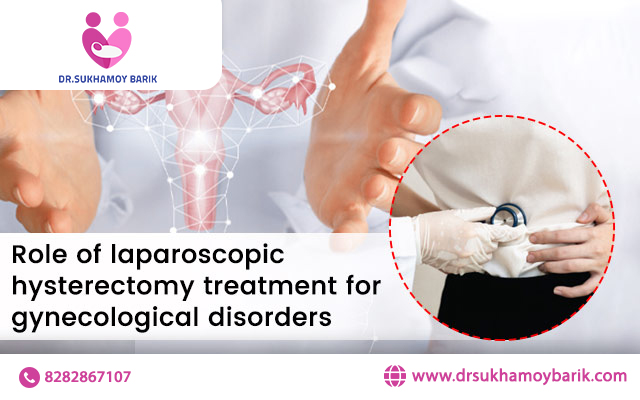A laparoscopic hysterectomy is a surgical procedure used to remove the uterus and sometimes the cervix. It is considered a minimally invasive approach compared to traditional open surgery. This treatment option is often used to address various gynecological disorders, such as abnormal uterine bleeding, fibroids, endometriosis, adenomyosis, pelvic pain, and certain types of cancer. Here, the best laparoscopic hysterectomy surgeon in Dumdum addresses the application of laparoscopic hysterectomy in addressing various gynecological disorders.
What is laparoscopic hysterectomy?
Hysterectomy is a major surgery to excise and remove the uterus. Laparoscopic hysterectomy is a modified version of the surgery where the surgeon uses a thin, lighted tube with a camera (a laparoscope) to visualize the inside of the abdomen and perform the excision of the uterus, often along with the cervix. This removal takes place through the incisions on the abdomen or through the vagina.
Laparoscopic hysterectomy provides better visualization for surgeons, enabling them to access hard-to-reach areas with precision. The high-definition camera used during the procedure gives a clear view of the pelvic organs, facilitating accurate diagnosis and treatment. This enhanced visualization also reduces the risk of complications during surgery.
Indications of laparoscopic surgery
Below are the gynecological conditions a laparoscopic hysterectomy deftly addresses and cures:
1. Uterine fibroids: Laparoscopic hysterectomy is commonly used to remove fibroids, which are noncancerous growths in the uterus.
2. Endometriosis: This surgical procedure can be beneficial for women suffering from endometriosis, a condition in which the tissue lining the uterus grows outside of it.
3. Adenomyosis: Laparoscopic hysterectomy can be performed to treat adenomyosis, a condition in which the tissue that lines the uterus infiltrates the muscular wall.
4. Heavy menstrual bleeding: Women experiencing excessive or prolonged bleeding may find relief through laparoscopic hysterectomy.
5. Pelvic organ prolapse: This surgical technique may be used to correct pelvic organ prolapse, a condition in which the pelvic organs descend from their usual position.
Effectiveness of laparoscopic hysterectomy
The best laparoscopic hysterectomy surgeon always suggests a laparoscopic way to remove the uterus because of the immense benefits associated with it:
1. Minimally invasive: Laparoscopic hysterectomy is a less invasive procedure compared to traditional abdominal surgery. It involves small incisions, resulting in reduced scarring and quicker recovery time.
2. Decreased blood loss: Laparoscopic surgery minimizes blood loss during the procedure, leading to a lower chance of requiring transfusions.
3. Shorter hospital stay: Patients who undergo laparoscopic hysterectomy have shorter hospital stays compared to those who have open abdominal surgery.
4. Faster recovery: Due to the minimally invasive nature of laparoscopic hysterectomy, patients generally experience a faster recovery and can return to their daily activities sooner.
5. Reduced postoperative pain: This surgical approach often results in less postoperative pain, contributing to improved patient satisfaction.Have you been diagnosed with uterine fibroids or endometriosis? Do you suffer from excruciatingly painful heavy menstrual bleeding? Reach out to the best laparoscopic hysterectomy surgeon near you to discuss if the procedure is suitable for your condition.
 8282867107
8282867107 sukhamoy83@gmail.com
sukhamoy83@gmail.com
